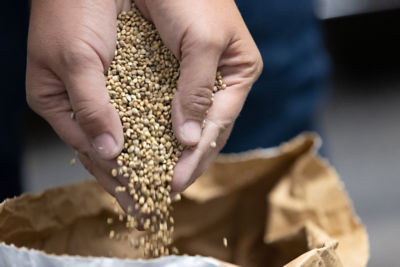Causal Agent
Phomopsis sclerotioides
Distribution
Asia, Europe and Canada
Symptoms
Black root of cucurbit is an important soil-borne pathogen that attacks cucumber, although melon and bottle gourd are also susceptible. Young plants are stunted and wilted. Roots are underdeveloped and rotted, exhibiting a blackened appearance due to the formation of pseudosclerotia. Leaf senescence increases on affected plants, resulting in appreciable yield losses. Foliar symptoms can appear similar to symptoms caused by vascular wilt fungi (e.g., Fusarium, Verticillium).
 Melon roots decaying due to Phomopsis sclerotioides infection. (Courtesy of Dominique Blancard)
Melon roots decaying due to Phomopsis sclerotioides infection. (Courtesy of Dominique Blancard)
Conditions for Development
Infection is favored by temperatures below 20°C (68°F). However, as temperatures become warmer and/or water requirements increase, disease progression also increases. Phomopsis scerotioides survival in soil is believed to be by means of pseudostromata and pseudosclerotia. The potential for infection becomes greater in fields where cucurbits have been grown year after year.
Control
Crop rotation has not been shown to be an effective control measure for black root of cucurbits due to the longevity of pseudosclerotia in soil. Soil fumigation and/or steam sterilization can help reduce fungal populations in soil, but grafting onto a squash rootstock and/or moving production out of soil and into an artificial substrate offer the best options for control.



